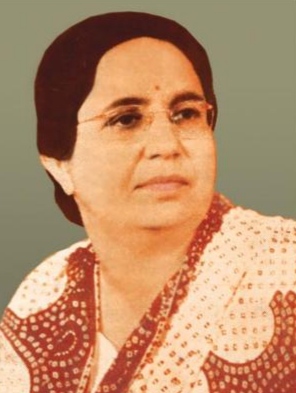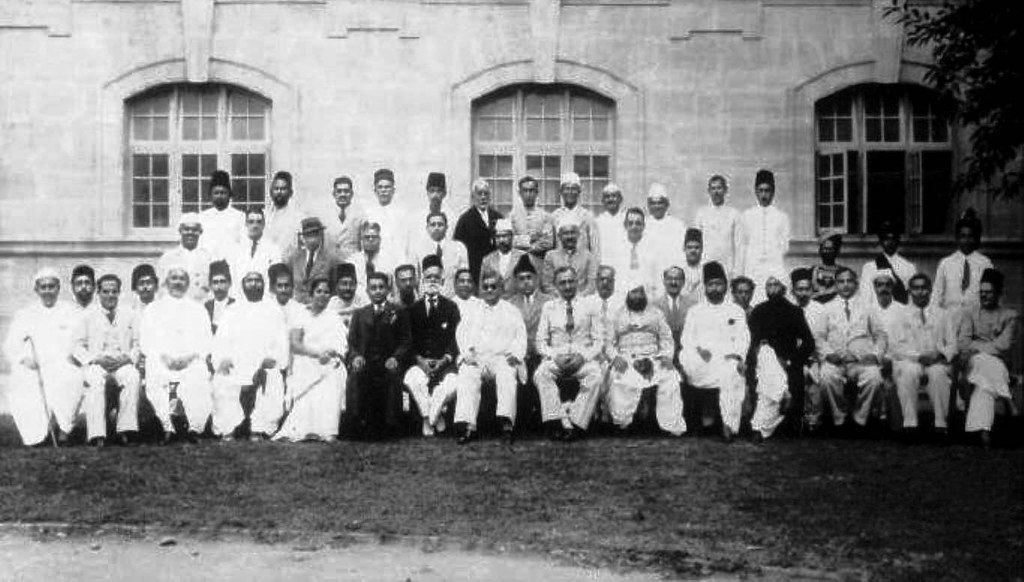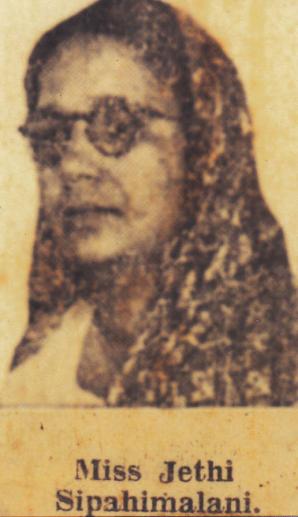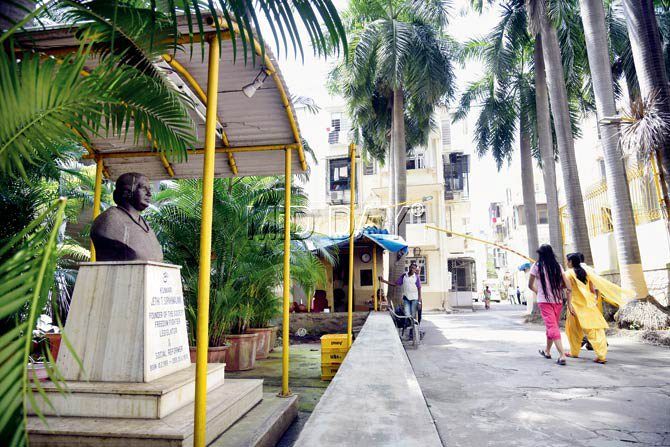
Born on Feb. 10, 1906 in Hyderabad Sindh, Jethi Sipahimalani was a brave lady who fought against all odds to achieve the goal of rehabilitating the uprooted Sindhis and build the housing complexes in Mumbai.
Nasir Aijaz
Kumari Jethi Tulsidas Sipahimalani, born on 10 February 1906 in Hyderabad Sindh, was a social reformer, staunch nationalist, fearless freedom fighter and politician who was twice elected on general seat of women constituency and later became the first woman Deputy Speaker of Sind legislative assembly, which came into existence in 1937 after the separation of Sindh from Bombay Presidency on April 1, 1936.
She completed her early education from Kundanmal Girls High School Hyderabad and Indian Girls School Karachi. Before joining the politics, she worked as principal in Daya Ashram.

In 1930 she left her job and joined the Indian independence movement against British rule. She was very much influenced by some other stalwarts of freedom movement like Acharya Assudomal Gidwani, Acharya J. B. Kirpalani, Jairamdas Doulatram, and Jamshed Nusserwanji. Despite hailing from an aristocratic family, Kumari Jethi took active part in freedom movement and was imprisoned many times during the period from 1932 to 1942 for taking part in Salt Satyagraha and Quit India movement.
Kumari Jethi Sipahimalani also played a key role in organizing the 18th Session of All India Women Conference in Hyderabad Sindh. The conference was held from Dec 28, 1945 to Jan 1, 1946 and was attended by the delegates including leading women from all over India. Certain eminent women from Sri Lanka (Ceylon), Lebanon, Egypt, England, Sweden, Australia and some other countries also participated in the conference. Jethi Sipahimalani had addressed the inaugural session of the conference.
She was witness to the bloody violent incidents against Sindhis that took place in Karachi on January 6, 1948. As the rioters had ransacked the properties of Sindhi Hindus, Jethi Sipahimalani raised the voice in Sindh assembly for payment of compensation to the affected Sindhis. The Assembly Proceedings mention that ‘Miss Jethi T. Sipahimalania, female member of the Sindh Legislative Assembly, moved a resolution in the assembly for compensation of loss to the minority community in 6 January riots in Karachi.”
She described the events of 6 January riots in these words, “Up to 3 or 3-30 I myself was in the town and never thought of returning home. I thought it was just something, which will be localized by the police in that particular area. But unfortunately to my surprise by the evening I found that it was not sporadic; it was surprise to the Ministers as well. They also thought that it was just a localized trouble and they also expected that perhaps it would be just localized and they concentrated on that particular area only. But as we all know every house and every possible shop in the whole town was looted and looted, as I said previously, not by the labor class, not by the poor class but by the educated people and by the neighbors themselves openly and flagrantly and they took big things, big sofas, big cots, radios, machines and all possible things. There was a clean sweep of the houses.”
Miss Jethi T. Sipahimalani also said, “There is behind my house a Chidakashi Mandir. It was also looted. Not only that Mandir but temples in other areas of the city were also looted and damaged by the agitators. The temple of Bhai Vassyaram, the temples of Hanumanji in Ranchore Lines, Sitla Mandir on Lawrence Road, Swami Narain Temple, the Jethmal Gurdwara in GarriKhata and the temple of Guru Nanak and other temples and gurdwaras were attacked by the mob.”
 In view of the unfortunate situation, Jethi Sipahimalani too opted to leave Sindh. After migration, she settled in Bombay and actively took part in politics and strived for resettlement of Sindhis.
In view of the unfortunate situation, Jethi Sipahimalani too opted to leave Sindh. After migration, she settled in Bombay and actively took part in politics and strived for resettlement of Sindhis.
Soon she was elected as the member in 1952 and then the first woman Deputy Chairperson of the Bombay Legislative Council from 1955 to 1962 of erstwhile Bombay State, which was divided into Maharashtra and Gujarat on May 1, 1960.
Jethi Bhen (sister), as the Sindhis called her with love and respect, was a brave lady who fought against all odds to achieve the goal of rehabilitating the uprooted Sindhis. She played a key role in the post-partition resettling of migrated Sindhis and providing them with their own roof, as they were stranded in miserable conditions at Kalyan Camp, the British military barracks of WW II, and established the Navjivan Cooperative Housing Society to build residential complexes at Mahim, Chembur, Matunga and Lamington Road during the decade of 50s.

Navjivan Society accommodated over 1600 migrant Sindhi families in housing schemes at Mahim, Matunga, Chembur and Lamington Road. At that time, Navjivan Society was the largest of all known societies in Asia, with multistory buildings, self-contained 2/3/4 bedroom units etc. The residents of Navjivan Colony, renamed as Jethi Sipahimalani Colony, have great respect for her and have erected her big statue at the entrance of the colony. While entering Navjivan colony, people are greeted by a statue of its onetime chairperson Jethi Sipahimalani.
“Dadi Jethi Sipahimalani was a lady of great refinement,” recalls retired history lecturer Lakshmi Shastri in her quietly tasteful home of 57 years, where she had worried, arriving in this jungle with no lights or concrete roads. “But it was central and we could stroll on the pleasant seafront,” she recalls.
Another Sindhi woman Gunwanti, also remembers Dadi Jethi. Her brothers were close friends of Dada Mangharam, the adopted son of Dadi Jethi and with his assistance they secured apartments initially in Chembur and then in Mahim.
“The Sindhu Resettlement Corporation was formed to assist and resettle displaced Sindhi families in Adipur. While in Bombay, Dadi Jethi Sipahimalani formed the Navjivan Society,” she said.
Jethi Sipahimalani also extended helping hand to Sindhis in establishing educational institutions, hospitals and other welfare institutions in Mumbai and other cities. And for that service, Sindhi community in Mumbai and other cities named various institutions after Dadi Jethi Sipahimalani. In Beragarh city of Bhopal also some schools are named after her. Some roads too are named after this great lady in Mumbai.
Dadi Jethi Sipahimalani, who never married and spent her whole life serving the Sindhi community, left for heavenly abode on May 21, 1978 while her adopted son Mangharam Sipahemalani, husband of Freedom Fighter Vishni, who looked after various educational institutions, passed away on November 19, 2013. His body was donated to Grant Medical College Mumbai.
___________________
Source: Peoplepill, Plex Page, Lokmat Times, Casemine, Mid-Day, Know Panhwar, Oocities, Indian Autograph and other websites.